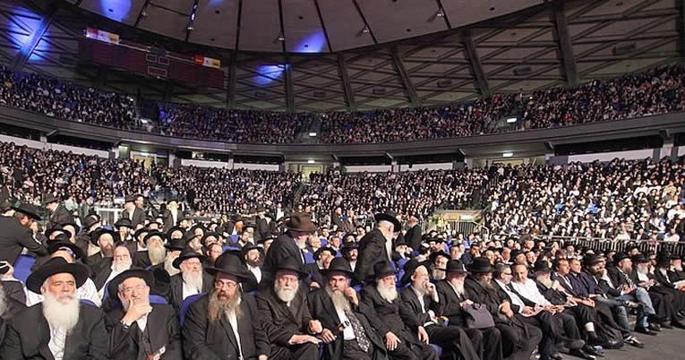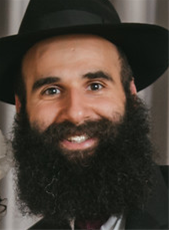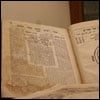Rabbi Yossi Lew clearly remembers the excitement of 33 years ago when he opened up to the first chapter Maimonides’ Mishneh Torah. It was the spring of 1984, and he was a 19-year-old student at the Chabad yeshivah in Johannesburg. Word had arrived that the Lubavitcher Rebbe had recently instituted a daily study regimen to be followed by Jews everywhere.
Lew, now a Chabad-Lubavitch emissary in Peachtree, Ga., has been learning three chapters a day since then. Along with thousands of fellow students all over the world, he is poised to end the massive work of Jewish law for the 36th time, each cycle taking the better part of a year.
The cycle will conclude on Sept. 26 (6 Tishrei), which is also the 53rd yahrtzeit of Rebbetzin Chana Schneerson, mother of the Rebbe, Rabbi Menachem M. Schneerson, of righteous memory.
On that Tuesday, Jewish communities worldwide will hold large Siyum HaRambam events honoring the completion of study of the Rambam’s Mishneh Torah.
In New York, the central celebration is expected to draw thousands. On that same day in Jerusalem, thousands more will gather for festivities of their own, where Chief Rabbi of Bnei Brak, Rabbi Y.M. Landa, will complete the 36th cycle, and the former Chief Rabbi of Israel, Rabbi Israel Meir Lau, will begin the 37th. Similar events will be held in Chicago, Milwaukee, London and other cities.
Maimonides’ 14-volume work is the only collection of Jewish law that spans the entirety of Jewish life, including those laws that only apply when the Temple in Jerusalem is standing, in addition to many others that are not included in prior or subsequent codes.

For those unable to study three chapters every day, the Rebbe suggested a parallel track at a more modest pace of one chapter daily. This year, the one-chapter-a-day students will be finishing the tract as well, an effort that took them nearly three years.
For those who even find that too difficult, the Rebbe instituted yet a third track. Paralleling the three-chapter-per-day regimen by learning daily about the same commandments being studied there in detail, this one explores Maimonides’ significantly shorter Sefer Hamitzvot (“Book of Commandments”), concluding all 613 mitzvahs each year.
When the Rebbe first called for the near-annual study of the Mishneh Torah, he underscored the unity achieved by the entire Jewish people studying the same subject in Torah at the same time (and the unique achievement of studying every aspect of Torah). The Rebbe’s emphasis on daily study echoed Maimonides’ own suggestion of how his work should be learned, but until the Rebbe’s innovation, most people studied the Mishneh Torah piecemeal.
Digital, Print and Online Resources
Over the years, digital and print resources have sprung up to make the Hebrew-language text readily accessible. Moznaim Publisher’s landmark translation of the entire Mishneh Torah by Rabbi Eli Touger was put online in 2009 by Chabad.org, complementing the existing Hebrew texts and audio classes. Last year, it was updated to display in a linear format, making it easier than ever for students to look back and forth between the English and Hebrew texts.
Chayenu—a weekly Torah-content magazine—carries the one-chapter-a-day Moznaim text of the week in both Hebrew and English. For many years, thousands of people have been receiving their daily Rambam via Chabad.org’s email subscription.
In 2012, the late Rabbi Yehoshua B. Gordon began streaming live classes following the one-chapter-a-day track on Jewish.tv. Thousands of students worldwide continue this online study.
More recently, Rabbi Mendel Kaplan, director of Chabad Flamingo in Thornhill, Canada, has produced a landmark online class of the daily Sefer HaMitzvot on Jewish.tv, and various translations of Sefer HaMitzvot, for both kids and adults, are easily accessible on Chabad.org.
A major step forward was the production of the “Hayom” app, where the daily Rambam, along with other components of the daily study regimen and handy information, can be easily accessed on smartphones.
In addition to recognizing and celebrating the accomplishments of those who have studied over the past year, siyum organizers say the celebrations serve to attract more people to join the cycle.
“When I began learning Rambam,” says Lew, “I felt good about myself and what I was accomplishing. I have never missed a day since, and when I look back now, I am filled with awe and gratitude to the Rebbe for the gift of becoming familiar with every area of the Jewish law.”








Join the Discussion